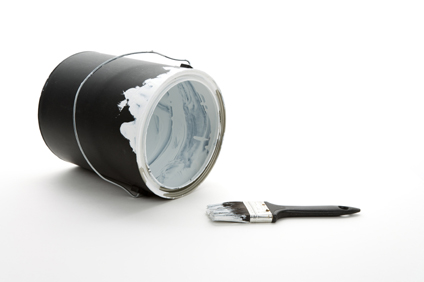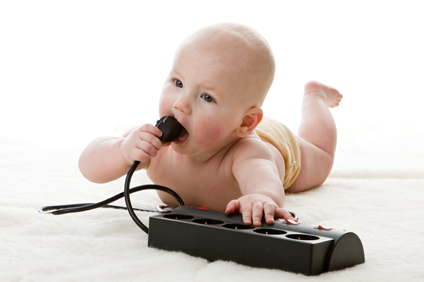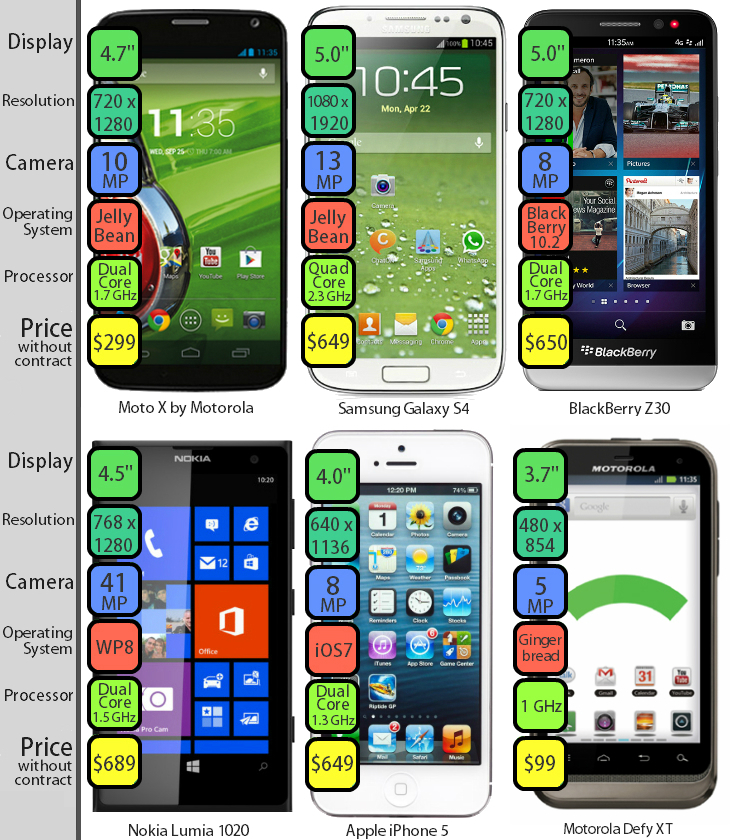When signs of cyanosis first appear, such as on the lips or fingers, intervention should be made within 3–5 minutes because a severe hypoxia or severe circulatory failure may have induced the cyanosis.
-From the Wikipedia entry for “Cyanosis,” the condition of bluish coloration on the skin or mucus membranes indicating low oxygen saturation of these membranes-essentially, suffocation.
I had originally intended to write this blog on Monday, January 13th but was sidelined, perhaps ironically, by developing pneumonia. On that day, former Fullerton Police officer Manuel Ramos and former Fullerton Corporal Jay Cicinelli were acquitted of all charges (second degree murder and involuntary manslaughter/excessive use of force, respectively) by an Orange County jury in the death of Kelly Thomas.
Originally, I added “a 37 year old homeless schizophrenic man” but then deleted it. Although true, that addendum to Kelly’s name has become an unintentional “caveat” for his death. It is the only reason I can think of as to why a twelve people could not even convict Ramos and Cicinelli for clear use of excessive force.
No, his name was Kelly Thomas. Nothing else matters except his life was ended by a pile of Fullerton Police officers.
It is probably a good thing I couldn’t write this blog right away. My first version, I am sure, would have spewed rage at both the officers who took his life, fellow Fullerton officers who defended their actions, and the jury. I could not fathom the jury’s decision, since the entire incident was recorded on video and by the officer’s audio recorders. There was no guess work here, no interpretation needed. Originally, I felt that the only way a jury could find Ramos and Cicinelli not guilty of excessive force was if they felt Kelly “got what was coming to him.” In other words, they must have felt Kelly’s actions justified what happened to him.
But that’s not what I am going to do. Instead, I am going to compare Kelly’s actions through out the video with the actions of my schizophrenic daughter, Jani, currently 11 years old. It is my hope that members of the jury and police officers everywhere will read this. Not because I want you to feel guilt or because I am angry with what you did. I just need you to understand what happened the night of July 5th, 2011, through the eyes of a parent with a schizophrenic child.
First, you must watch the video. Many people cannot get through the whole thing. But you have to. You have to watch it, not for the shock of seeing a man beaten to death but to understand how all of Kelly’s actions can be explained by his schizophrenia.
[There is a video that cannot be displayed in this feed.
Visit the blog entry to see the video.]
00:25: Officer Ramos is casually swinging his baton. It should not be out unless Ramos believes he is under threat. Based on his swinging of the baton, he does not appear in a defensive stance or ready to use the weapon.
Although the audio is broken, Ramos states “….trying door handles on cars,” apparently accusing Kelly of doing this. Kelly responds, repeatedly “I don’t know what you are talking about.”
Let’s stop right there. Police officers are trained to investigate and so, by nature of their training, they assume every person they question who does not provide an immediate answer to be lying. “I don’t know what you are talking about,” sounds like a lie. Except listen to Kelly’s tone. It is the same tone you would use if I asked you to explain Einstein’s General Theory of Relativity.
I will often ask Jani questions about things that happened hours ago, like “What did you do in school today?” or “Who did you play with at recess?” She cannot immediately answer. Typically, most questions directed at Jani must be asked multiple times to elicit a response. This is because schizophrenia is a thought disorder that interferes with the ability to think clearly. Jani’s mind neither stores information like the rest of us nor can she access it as quickly as the rest of us. Some questions she can answer immediately if she is thinking about it but most require repetition and even then there is no guarantee we will get an answer.
But how do police react to someone who cannot immediately answer a question?
Either they are lying or they are on narcotics.
The more officers have to ask the question, the more annoyed they get and they take this as resistance from the person. Those with mentally ill children know that most questions must be asked multiple times.
Kelly is not resistant because he hands over his backpack to be searched.
In the next minute, Ramos mocks Kelly by asking him what language he wants him to speak in. We don’t know what Kelly said but it might have been something like “I don’t understand what you are saying.” Police officers assume their questions are clear. When Jani is asked multiple questions, she shuts down. She can only handle one question and one answer at a time. After the response, she needs time to process whether her answer was “correct.” If it was, she draws satisfaction from that and takes several moments before she is ready to move on. Rapid fire questions to someone with schizophrenia will draw a frustrated response as new questions come before the previous one can be processed. Want to know what this like? Find someone who speaks a language you are not conversational in and ask them to talk you at natural speed in their native tongue, all while you try to translate in your head. I can read Spanish and I can understand but if the Spanish speaker doesn’t give me time to translate in my head, I rapidly fall behind. It becomes so hopeless I give up and stop attempting to understand.
This is what happens to people with schizophrenia every day and what happened to Kelly.
Kelly keeps asking Ramos what he wants to know and Ramos has changed his question from trying the door handles on cars to mockingly asking him what language Kelly wants him to speak in. Kelly begins to take him literally. By 1:09, Kelly thinks he is in a conversation about languages he speaks, like you would have a conversation over coffee, while Ramos is getting increasingly sarcastic. Kelly does realize Ramos is being sarcastic or hostile.
At 1:24, Ramos points to Officer Wolfe and says “My partner speaks ten different languages.” I assume thinks he is being funny because he still thinks he is dealing with a man who is lying to him. Kelly turns around and says, “I don’t see him.” Wolfe responds, “Right here,” but Kelly does not turn to Wolfe.
This is common in both autism and schizophrenia. Kelly wasn’t lying. He literally didn’t see Wolfe and even once Wolfe acknowledged himself, Kelly did not acknowledge him. This is the hyper-focus on what is in front. Both those with autism and those with schizophrenia struggle to talk to two people at once. Jani cannot have a back and forth conversation.
It is also possible Kelly literally couldn’t see Wolfe due to hallucinations. When you experience hallucinations, it is hard to discern who is real and who is not. It is entirely likely, since Ramos was the one engaging with Kelly, that Wolfe, if Kelly saw him at all, might have been dismissed as a hallucination. We’ll never know.
Ramos then returns to asking about the car doors and Kelly keeps responding “I don’t know what you are talking about.” Ramos is frustrated by a lack of a “yes” or “no” answer but again, this is common for those with schizophrenia. They don’t necessarily see “yes or no” questions as “yes or no.” Kelly can’t answer what he doesn’t know so he repeats “I don’t know what you are talking about.” With Jani, the questions must be specific and repeated and I don’t get a “yes or no.” She doesn’t say “I don’t know what you are talking about,” but she does say, “I don’t know.” Not defiant. Just fact. When most of us don’t have an answer, we default to “no,” as in “No, I didn’t try to break into cars. Jani does not. Partially, this is because she can’t be entirely sure what she did. She has to think about it. When you don’t have a strong grasp on reality, it is hard to answer.
Here, try something.
How many times did you try to break into a car today?
Easy, right?
Now, how many times have you been to the bathroom today?
Can you answer that? It gets harder, doesn’t it? Three? Four?
How many times did you cross your living room today? How many times have you passed your dog or cat today? How many times have your children asked you a question? What were you doing at exactly 10:49 this morning?
The fact is that you can’t remember these things because they weren’t significant to you at the time. You could not answer with a “yes or no” because you don’t know. For those with schizophrenia, almost every moment is like trying to remember the mundane. Most moments in the past are foggy. If you are neurotypical and a cop asks you a question, you will rip your brain open to remember. But a cop has no significance to someone with schizophrenia. Jani meets cops all the time but never remembers because they don’t mean anything to her. The badge, the gun. These mean nothing. If you don’t talk to her about what she wants to talk about or play with her, you don’t exist.
Cops are trained to be distant… which is exactly what puts them into conflict with the mentally ill. If you want to be remembered, you have to engage the person in their world. Coming in with a gun and a badge and a taser and a baton means nothing. Those with schizophrenia require you to earn authority through trust and familiarity. Cops, unfortunately, just assume authority because the law gives it.
At around 4:00, Kelly won’t give his first name, saying “I don’t know. I gave up on it.”
Imagine what Jani would do if the police asked her, “Is your name ‘January?'”
How would Ramos have responded to an adult Jani?
We’ll put aside Ramos’s statement “…fucking take him for 496” even though Wolfe, the lead officer, says “Let’s see if [the owner of the mail in Kelly’s backpack] is the victim of theft,” apparently wanting to dispense with due process investigation, followed by the infamous, “See these fists? They’re about to fuck you up,” despite the fact that Kelly is in no way threatening in his behavior.
The conflict starts because Ramos wants Kelly to stick his legs out in front of him and place his hands on his knees. Kelly is unable to comply. This is taken as resistance by Ramos. Unfortunately, this is where thought disorder comes in again. If Jani stubs her toe, she will literally believe she cannot walk. Individuals with schizophrenia do not have the same ability to follow physical directions as their mind dictates what they can do, not their body. Jani will sometimes believe she cannot climb a flight of stairs even though there is nothing physically wrong with her. At 14:45, Ramos begins ordering Kelly to stick his feet out in front of him. The speech is hostile and rapid. It takes Kelly, who had been in his own world for the last several minutes, a few seconds to comply. He does but by 15:38 he is frustrated by what he perceives as Ramos’s changing orders. At 15:39, Ramos, clearly angry, is the first to make contact, placing his hand on Kelly’s shoulder before withdrawing it. Ramos grabs him again at 15:41 and Kelly rises, angry.
Basic rule of dealing with someone in a psychotic state. Do not touch them unless they invite you to. For Kelly, “fight or flight” is beginning to kick in. At 15:45, Wolfe comes around the patrol car with his baton out. Kelly puts up his hands in a surrender motion while backing away. Despite this, Wolfe strikes him in the back of the knees with his baton.
Kelly never struck either officer. Ramos grabbed him twice and Wolfe hit him with the baton even though Kelly was not threatening either officer.
Now begins the most difficult part of the video. Kelly apologizes profusely but the officers won’t relent because he will not go face down. He is tasered five times. He starts calling out to his father.
At 19:30, Cicinelli can be seen repeatedly beating at Kelly’s head with the butt of his taser. At 19:40, Cicinelli says, “He’s on something,” an assertion he will make several more times, including the paramedics.
No, he wasn’t, Mr. Cicinelli. First, cops are trained to get suspects face down even though any one trained in therapeutic restraints knows you don’t do that. You stay off the chest.
Kelly thinks his legs are broken. Remember what I said about Jani thinking her foot is broken? Even if you put aside the severe beating he has gotten, his mind is telling him he has a serious injury and cannot move.
Through minutes 21 and 22, Kelly’s speech becomes slower and more muffled. An officer comments “He is going to sleep.”
No, he was dying. By the 22nd minute, he was repeating only, “Help me.” At 22:46 he mumbles “Help me.”
They are the last words he will ever utter. In the minute following, it is sickly comical that the officers are trying to figure out how to keep restraining Kelly when he has already lost consciousness.
Cicinelli comments, “The problem is he is gonna fight so we gotta get him, really, really good.”
No, I think you’ve already done that.
In minute 24, they notice that Kelly is bleeding a lot. Apparently, after they notice the blood all over themselves. Then they are not sure if he is still breathing.
Now the level of injury becomes apparent. “They hit him in the head. Side of his head.” Cicinelli offers his first defense, saying, “I think it’s him because, I, I, I ran out…we ran out… we ran out of options so I got the end of my taser and I probably…. I just start smashing his face to hell.”
According to the Fullerton Police Department, this is apparently within training. Ramos and Cicinelli’s defense attorney, after their acquittal, said that they were “peace officers” doing what they were trained to do.
“Smashing” someone’s “face to hell” is part of standard police training? This was the police “doing their jobs?”
That’s a scary thought. This is where respect for law enforcement crosses to fear. How can you respect those who are trained to smash your face to hell? Fear them, sure? But trust them?
And that is the problem. How do we trust the police anymore? The weekend before Ramos and Cicinelli were acquitted, an 18 year old boy in North Carolina was shot to death by an officer who allegedly stated “We don’t have time for this.”
Cicinelli continues to tell anyone who will listen in the video that Kelly had to have been “on something” as it took three of them. It actually took six officers to hold him down.
Let’s talk about Bodhi. Bodhi is 45 pounds. When Bodhi goes into self harm, it takes at least three to four full size adults to restrain him. His behaviorists have had to undergo a specific class formed just for those BT’s who work with Bodhi on specifically HOW to restrain Bodhi without hurting him and without letting him hurt himself. One of his respite care workers, a full grown former basketball player told me that Bodhi is harder to restrain than the 24 year autistic adults he works with. The difficultly comes in trying to restrain without harm.
In a psychotic or autistic rage, those that suffer can exhibit superhuman strength.
Because they are fighting for their lives from something inside of them.
If you watch to the end of the video, after the paramedics arrive, you will see why I opened with the mention of cyanosis.
Every action of Kelly was consistent with a person suffering from schizophrenia. He never initiated the violence. He tried to run and he could not physically comply with officers although he was not aggressive or violent. And he died for it.
Ramos and Cicinelli were acquitted. Susan thought people might riot. I didn’t think so. Modern Americans only riot if their team wins a championship.
I stated on the JF Facebook page immediately after the verdict that the police could not be trusted anymore. I took some flack for this, mostly from wives of law enforcement. I get it. You don’t want your husband lumped in with two thugs.
But trust is earned, not given. For too long, police have assumed that they should be respected simply because of their job. Part of it born out of 9/11 and the first responders who died. Part of it is we think we need the police to protect us.
But who protects the mentally ill from the police?
The answer is all of us.
I don’t hate cops. But enough of them have told me that they assume every one they come into contact with is on drugs. Because so many of them are. Drug addiction and mental illness get conflated. But even a drug addict doesn’t deserve to be beaten to death.
I cannot say Ramos and Cicinelli were “just a few bad apples” so many want me to. Because the problem isn’t Ramos and Cicinelli. It’s the Fullerton officers who defended them. The officers who refuse to speak up about abuse are no better than the officers who perpetrate it. If police officers and departments want the people to trust them, they have to stand up and say, “This kind of excessive force will not be tolerated.” They have to stand up and say, “We do not defend these officers or their actions. They are a blight upon our profession. They represent the antithesis of who we are and what we do.” In short, I am asking law enforcement to stop standing up for the brotherhood and stand up for what is right. Stand up for the people you swore to defend with your life. Ramos should have been reported years before for his use of language. Officers must not protect other officers who do not uphold everything that is noble about being a police officer.
Until that time, it is up to us, the people, to watch the police and to let them know we are watching. Yours is a position of trust.
Earn it back.
Right now, I tell my son and daughter to listen to you because I fear what you will do to them. I cannot tell them to trust you.
And that breaks my heart.
[There is a video that cannot be displayed in this feed.
Visit the blog entry to see the video.]

































 I recently turned 30, got my first full-time job, and found out I have over $45,000 saved for my retirement.
I recently turned 30, got my first full-time job, and found out I have over $45,000 saved for my retirement.